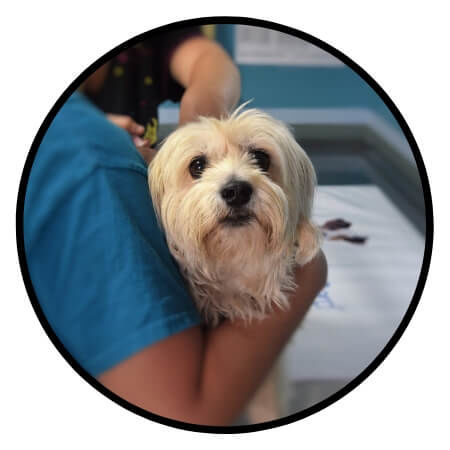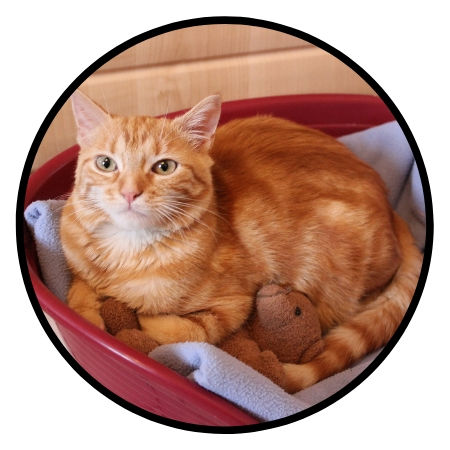Moving is a stressful experience for most humans. There’s a lot of change afoot, as well as many moving parts to manage, and certain details that will always be out of your control. Now, imagine how you would feel if everything was out of your control and no one could explain to you what’s happening or why.
The moving experience for pets is a lot more stressful, and the further the move, the worse it can be. Whether you’re relocating across town or moving across the country with pets, there are a few ways to make this process easier on our furry or feathered friends and scaly sidekicks. Here are 9 ways to make moving pets as painless as possible:
1. Keep up their routine
Whatever type of pet you have, sticking to their usual schedule throughout the entire moving process from start to finish will help create a sense of normalcy. It’s comforting and shows them that they have something to rely on at a time of constant change.

2. Visit the vet
Before you move, book an appointment with your veterinarian to update them about your relocation and get your pet prepared for the move. Use this appointment to:
- Acquire any certificates or records you may need
- Update their vaccinations
- Pick up prescriptions, supplies, or special food
- Ask about any calming sprays or medications that may be suitable for them to make the travel experience less traumatic.
3. Packing their stuff
When packing up your pet’s items, set aside a ‘moving kit’ for them too—things they will need within the first 24 hours of moving. Include:
- Treats, food, water, and dishes
- Their favorite toys and bedding
- Any medications or special equipment they need
- Copies of any important medical records
- A leash or other travel item
- Seasonal gear (rain or winter boots, coats, sweaters, etc.)
- Waste disposal and cleaning materials
If it isn’t necessary to pack a separate bag for them, carefully label the box so that you know what it is and keep it with you in your car so you can unpack it as soon as you arrive.
4. Traveling to the new home
Most airlines will transport pets as cargo, but the experience can be stressful for the animals. The best way to move your pets is by car, where they will be surrounded by familiar scents and people, and you can easily make stops if required.
However, unless your pet has a lot of experience with cars, they may not enjoy the unexpected trip. If there is time before you move, desensitize them to the car and the carrier they will be traveling in so they don’t associate these spaces with nothing but negative experiences, and make the experience more positive wherever possible:

- Let them spend time in the car and take them on short drives leading up to the move.
- For pets like dogs and cats, let them explore the vehicle in supervised increments.
- When moving with cats, allow them to “claim” the car by rubbing their scent on the seats.
- Many birds typically enjoy car travel once they adjust to it, so make sure they are able to see out of the windows.
- For both birds and reptiles, carefully manage the temperature of the car to keep them comfortable.
- Fish likely won’t need to be exposed to the car beforehand, but they should be kept in a cool, dark container to help keep them relaxed. The Spruce recommends picking up a styrofoam cooler to transport them safely.
Plan ahead of time for any special transportation needs. When the time comes to transport your pets to your new home, place them into their crate or carrier and securely load and strap it into the back seat, or trunk if your vehicle’s trunk isn’t separate from the rest of your vehicle. It is not safe for pets or people in the car if there are animals moving around freely, and they can be seriously injured if there is a car accident.
If you are moving with a pet long distance and will need to make at least one stop before you arrive at your new home, confirm with your hotel(s) or AirBnB(s) that they accommodate pets.
5. Create a safe space
For animals that typically roam the house freely and don’t have an enclosed habitat, it’s best to transport them after an area has been unpacked and set up for them. If it’s not possible to wait, then make unpacking that room a priority and ensure the rest of the space is safe in the meantime. A safe space should:
- Be somewhere your pets will be securely contained, with no ways to escape into walls or out windows and doors.
- Have no doors that can close behind them, trapping them inside. If you’re concerned about closets or other rooms, try taping down the door latch so your pet can easily push the door open if it shuts behind them.
- Includes places they can hide but you can still easily access.
- Doesn’t have any items that can be knocked over, fall on them, or break.
Include all of their favorite toys, bedding, comfort items, food, water, and litter box or pee pads.
| PRO TIP: Ask your landlord or real estate agent whether the previous tenants or home owners had pets. In the event that they did, do a deep clean of the house before introducing your pets to the space—fleas can survive upwards of 100 days between meals and can make a temporary home out of carpeting, so they could be around even if it has been a while since the space had residents. Vacuum all carpets in the space a few times a day for two weeks to ensure you get rid of larvae in addition to adults, or rent a steam cleaner. If you suspect that there is a flea infestation, contact experts for additional tips and get your furry friends some preventative treatments. |
You may also prefer to board your pet or have them stay with friends or family while you get settled in to your new home.
6. Go slowly
Some animals may adjust to this change more slowly than others, and should be limited to one room until they adapt to the sounds and scents of the home. After a day or two, let them explore the rest of the house, but make sure they can easily return to the established safe space if they get scared.

7. Set out familiar items
Unpack the areas of your home that your pet is most likely to use or spend time in and make sure to put out familiar items. Leaving out items that smell like you, the other members of your household, your pet, and your old home, will help them become acclimated to the new space.
8. Be present
While you might have a lot to do before, during, and after your move (especially if you’ve started a new job) you should make every effort to be home for your pet as much as possible. In addition to sticking to their regular routine, make more time to play with them, take them for walks, or simply hang out in the same room. If you or a member of your household can’t take time off work, try to have someone they are familiar with come home to check in on them once a day.
9. Let them explore
If you have an animal that spends time outside on walks or independently, there will be lots of new sights, smells and sounds to go along with the new neighborhood. Like with the home, introduce them slowly to this new area and let them take the lead.
Moving with dogs might seem like a straightforward process, but the change can be harder on them than you think. Begin introducing them to the new neighborhood slowly by exploring the area one or two blocks at a time and getting to know other dog owners in the neighborhood. Not every dog does well with new animals, and other owners might have some helpful advice for how to introduce your dog into the community or what animals should be avoided.
If you have an outdoor cat, don’t forget to check local bylaws to ensure there won’t be any issues with having an outdoor pet, and don’t let it out unsupervised for a few weeks. Make sure that it knows and recognizes its home and that its microchip and collar have been updated with your new contact information before you start letting it out to roam the area.
Conclusion
How quickly your pet adjusts will depend on their personality. Some cats or dogs may be totally comfortable with the move, while others will need more time. You know them best, so go slowly and don’t push if they seem overwhelmed or show signs of fear.
Make your move easier on your pets by remembering to:
- Stick to their routine throughout the moving process
- Create a safe space
- Introduce them to their new home slowly
- Leave out favorite toys and items with familiar scents
- Be home for them as much as possible in the first few weeks




